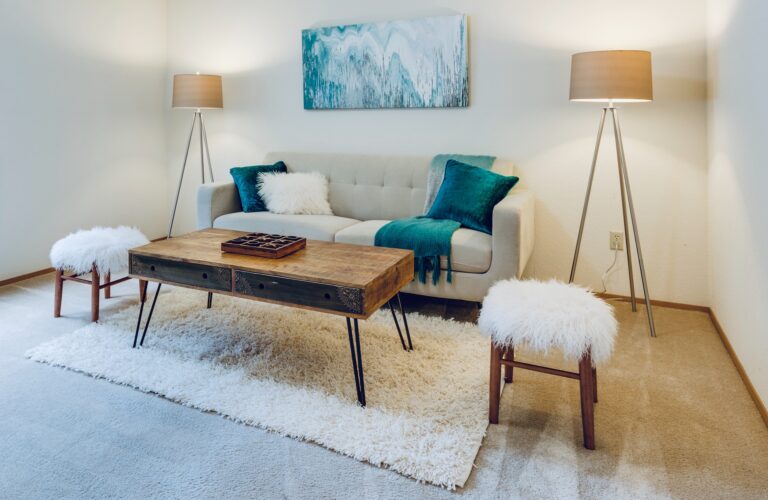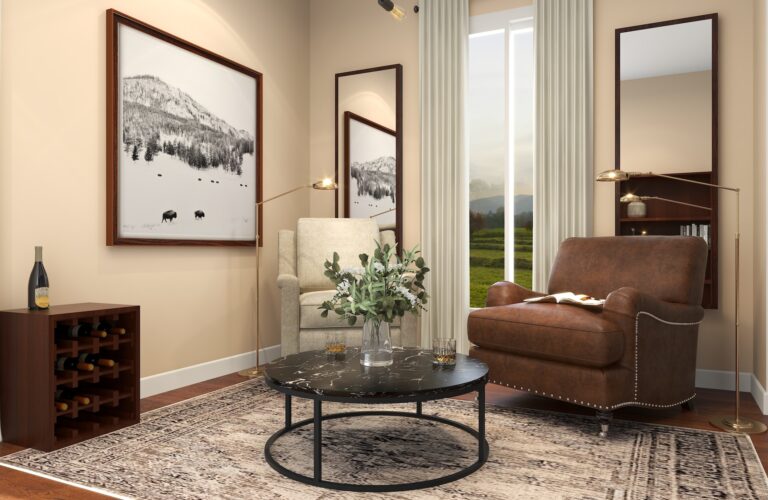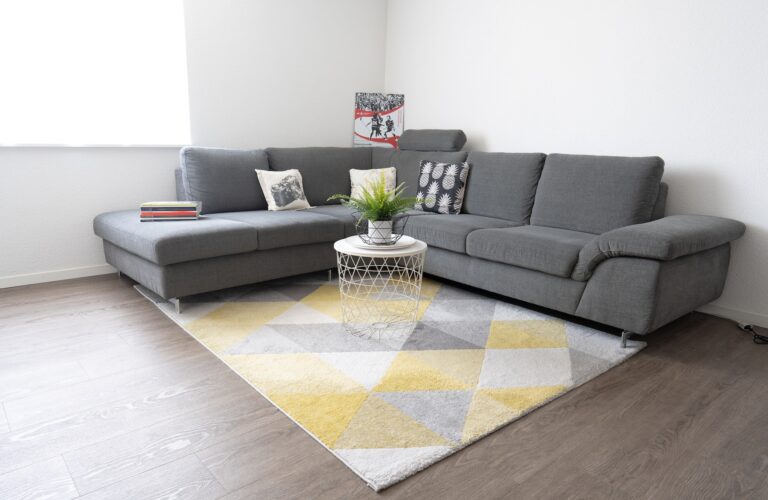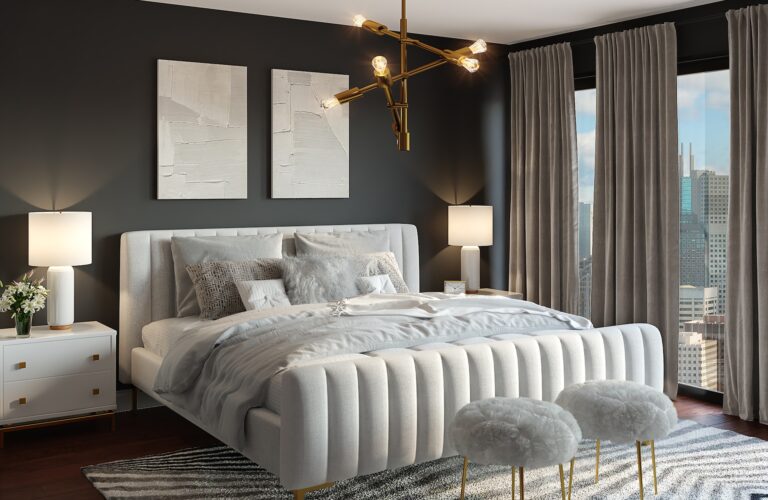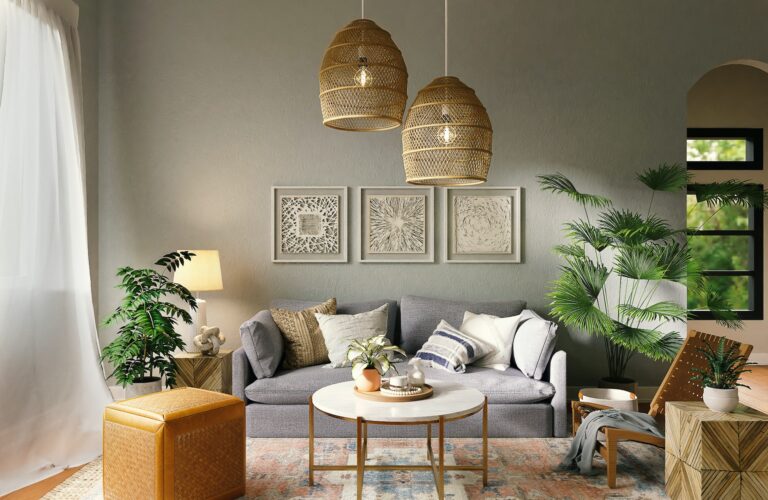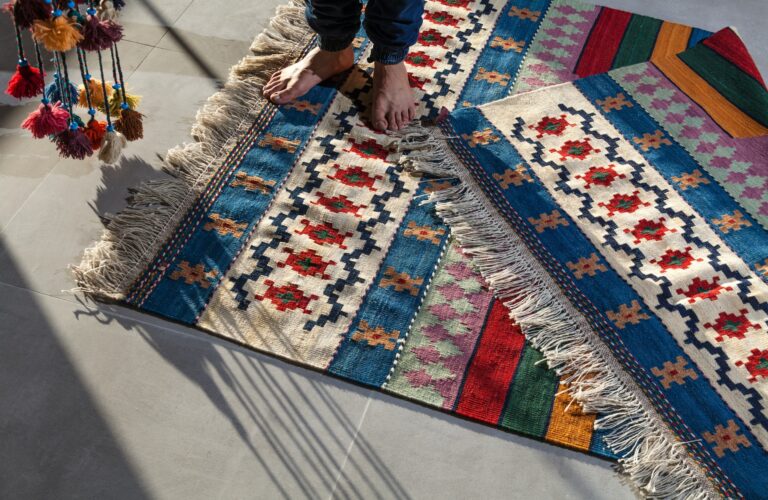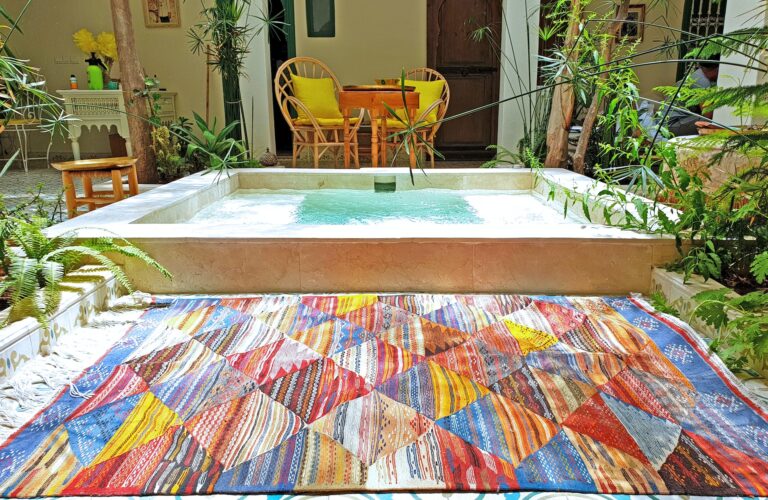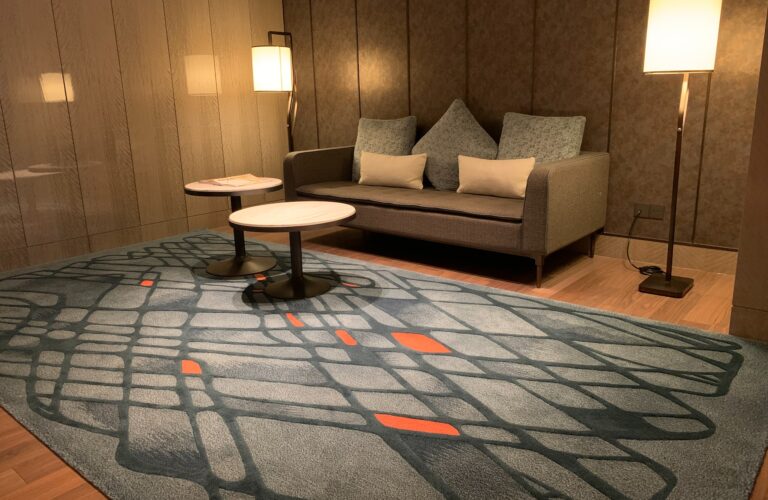You probably know you can find antique area rugs that are a couple centuries old, but you might not realize how ancient the craft of hand-knotting rugs actually is. We can’t be sure of the exact origin of rug making, but the oldest knotted carpet was found in 1949 in Siberia — experts estimate that it was made in 500 BC, more than 2,500 years ago. And this ancient rug was a highly detailed piece that obviously involved great technical skill, so the tradition likely started well before that time period.
Since at least 500 BC, handmade area rugs have wavered to and fro in popularity. Originally, hand-knotted rugs and carpets were developed to protect nomads from the elements, and these were likely very simple. But as technical skills improved and the designs became more intricate, kings and emperors began to adorn their palaces and manors with large area rugs. Many of these ancient rugs have been lost or destroyed over time, during the Mongol conquest of Persia for example.
Since at least 500 BC, handmade area rugs have wavered to and fro in popularity. Originally, hand-knotted rugs and carpets were developed to protect nomads from the elements, and these were likely very simple. But as technical skills improved and the designs became more intricate, kings and emperors began to adorn their palaces and manors with large area rugs. Many of these ancient rugs have been lost or destroyed over time, during the Mongol conquest of Persia for example.
What most collectors talk about when they discuss antique rugs are those made during the two “golden ages” of rug making.
The First Golden Age for Persian Rugs
Between 1500 and 1700 AD is considered the First Golden Age for rug weaving and knotting. There are about 1,500 antique Persian rugs remaining from that time period. Some of these are in museums, while others are displayed in private collections and homes.
These rugs were crafted during the Safavid Dynasty, when commerce and all crafts flourished in Persia. This was due to trade with Europe and Shah Abbas’s emphasis on the rug making craft specifically. Silk was the material of choice during the First Golden Age and plant-based dyes were used to color the fibers. Gold and silver threads were incorporated into some of the more exquisite Persian rugs to add a luxurious glimmer.
What ended the First Golden Age? The Afghan invasion in the early 1700s. Very few rugs were made after the invasion and none of significant value.
The Second Golden Age for Persian Rugs
About a century after the First Golden Age, Persian rugs experienced a rebirth and entered into the Second Golden Age between roughly 1800 and 1910. It was then that craftsmen developed a renewed interest in the artistic and crafting skills necessary to make beautiful pieces. Rugs made during this time period are richer in color than their predecessors, though they still pre-date artificial dyes so the number of colors remains limited.
While there are more Second Golden Age rugs available in the market than First Golden Age rugs, they are quickly being snapped up by collectors and art investors. A few highly valuable rugs have sold for millions at auction, which has spurred additional interest in collectible rugs from the Second Golden Age.
Rugs aren’t guaranteed to increase in value over time, but investors often say they receive more enjoyment and satisfaction from their Persian rug collection than their stock portfolio.

